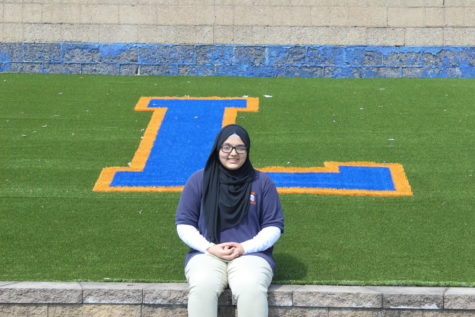The Month of Ramadan
May 6, 2022
With the appearance of the crescent moon, the holy month of Ramadan has come upon us. From Friday, April 1st, to Sunday, May 1st, Muslims all around the world enter a period of fasting for good deeds. They fast from before sunrise to a little after sunset. Each year, Ramadan begins 10 days earlier than the year before. Therefore, every night in the month of Ramadan, Muslims open their fast around a time, which changes each day. It increases by a minute each day.
The month of Ramadan consists of many traditions in various cultures because it is celebrated by millions of Muslims across the globe. These traditions have been passed down for generations in different Muslim communities, and there are prominent similarities of how they are practiced. During Ramadan in Egypt, the streets are decorated with Fanoos, “lanterns,” to spread light for the holy month and symbolize unity and joy. In Turkey and many Middle Eastern countries, over 20,000 drummers roam around to wake up Muslims for Suhoor, a morning meal eaten by Muslims before the sun rises and a tradition dating back to the seventh century. Children in the United Arab Emirates and other Gulf countries roam around neighborhoods dressed in bright clothes, collecting sweets while singing local traditional songs. A town crier roams around Morocco’s neighborhoods, blowing his horn to wake up families for Suhoor.
Not only are there traditions, but there are also popular dishes eaten during this holy month. Traditional foods and dishes during the holy month of Ramadan bring together family and friends to share and enjoy their meals. Prophet Muhammad (PBUH) broke his fast with dates along with camel milk and water, and it is common for many to break their fast with dates along with warm milk or water. Soup is a common option for Iftar because it helps replenish the body with fluids and is a very diverse dish. Common soups are lentil, vegetable, chicken, or vermicelli soups, but lentil soup is the most popular. Fresh vegetables are recommended for Iftar and usually salad is served along with numerous other dishes. Kibbe, small fried dumplings made with bulgur wheat and stuffed with meat, is present on many tables during Ramadan. Samosas are also very popular and can include many different types of fillings such as meat, potatoes, chicken, and etc. Kebabs are popular among Iftar meals and can be ground meat wrapped around a rod or chunks of meat grilled. To top it off, desserts such as Kunafa, phyllo dough with cheese topped with simple syrup, or baklava, phyllo dough layered with nuts and topped with simple syrup, are popular sweet dishes for families during this holiday. There is even more variety when it comes to Suhoor such as eggs/omelets, fava beans (foul mdammas), fruits, vegetables, and oatmeal. This is not even close to all of the dishes that are made during Ramadan, but it is all different for those who are fasting.
As this time of the year approaches, you will hear Muslims around you share that they are fasting. Many might not know what that means. Here are some helpful tips to show respect towards those who are fasting.
- If you want to know about something that you are unsure of, just ask any person who is willing to answer your questions.
- Do not try to enforce food upon them. It is okay to eat in front of someone who is fasting, but not to continually offer it to them.
- Be aware of energy levels. Many Muslims, throughout the day, may seem tired or a little out of energy. Try to not push them towards intense physical activity or any form of intense activity that affects their energy levels throughout the day.
- If you would like to wish someone during this time, you can say “Ramadan Mubarak” or “Ramadan Kareem”, it is similar to wishing them “Happy Ramadan”. It is always nice when someone wishes you good.





